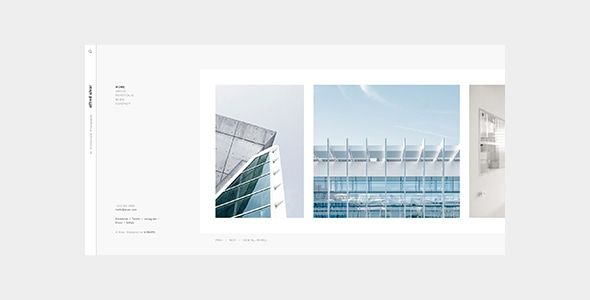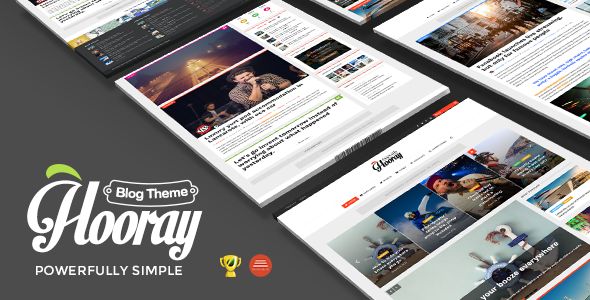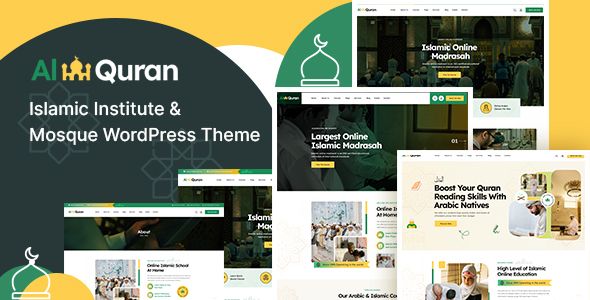Justiq – Lawyers WordPress Theme

- Description
- Reviews (3)
- FAQ

When a law firm invests in a website theme, the real test isn’t just “Does it look professional?” It’s whether the license and feature set fit how legal teams actually work—multiple practice pages, attorney bios that evolve, regional microsites, and a staging environment for approvals. That’s where the freedom-focused edition of Justiq – Lawyers WordPress Theme stands out. You get installation on unlimited websites, a one-time purchase model, complete functionality, and updates that track the official release cadence. In plain terms: you keep the design quality and reliability you expect while gaining the operational freedom to stage, iterate, clone, and hand off sites without license friction.
Below is a practical, human-written deep dive into Justiq – Lawyers WordPress Theme—how it helps attorneys earn trust fast, present case results responsibly, publish thought leadership that converts, and maintain accessibility and performance standards that align with modern expectations and the realities of mobile-first clients.
✅ Product Description
Justiq – Lawyers WordPress Theme is built for legal practices that need to balance credibility with clarity. The typography is measured and confident, spacing is generous, and interactions are subtle—because in legal services, the most persuasive design is the one that never gets in the way of understanding. Out of the box, you’ll find page templates for practice areas, attorney profiles, case results, client testimonials, FAQs, consultation forms, office locations, and a blog/resources hub that supports long-form analysis as well as quick updates.
Justiq favors an ethical, evidence-first presentation. Headlines make claims that the copy can support. Bio pages highlight accreditation, bar memberships, jurisdictions, practice admissions, and publications. Practice pages prioritize the problems clients recognize, the process your firm follows, and what a realistic next step looks like—typically a short, respectful consultation request with clear expectations.
Because this is a freedom-forward edition, your firm can run staging and production side by side, maintain regional or language variants, and deploy microsites for special initiatives or co-counsel partnerships—all without counting site activations. Updates stay in step with the official Justiq release, so you don’t trade independence for stability.
✅ Key Features (Designed Around Legal Workflows)
1) Practice-Area Architecture That Guides, Not Overwhelms
Each practice page in Justiq – Lawyers WordPress Theme follows a clear rhythm: a plain-language summary of the legal matter, concise “Who we help,” a short list of typical issues clients face, the process your team uses, and a gentle CTA. Supporting sections handle jurisdiction notes, statutes of limitation reminders (written generally), and related FAQs.
2) Attorney Bios That Build Quiet Authority
Bio templates include credentials, courts of admission, bar numbers (if desired), practice areas, publications, speaking engagements, languages, and community service. A secondary sidebar holds contact methods and downloadable vCards if you choose to supply them. Portrait ratios are consistent to keep the grid looking composed across breakpoints.
3) Case Results & Matters With Compliance-Aware Copy
Justiq provides a case result pattern that encourages responsible framing—matter type, forum/court, high-level outcome, timing, and any lawful disclaimers. “Past results do not guarantee future outcomes” can be placed near the section automatically, and the layout supports redacted details for sensitive cases.
4) Intake & Consultation Forms That Reduce Friction
Short, multi-step intake collects essentials without turning into a deposition: name, contact, matter type, jurisdiction, urgency, and a short description. Error states are accessible; success messages set expectations clearly (“We’ll reply within one business day”).
5) Location & Office Pages
If your firm has multiple offices, Justiq – Lawyers WordPress Theme provides location pages for addresses, maps, parking notes, and practice availability by office. Office pages can highlight local teams and community relationships—useful for regional SEO and client reassurance.
6) Review & Testimonial Presentation
Quote blocks and star summaries appear in a measured, credible style. For regulated jurisdictions, disclaimers can be appended. The design avoids hype; testimonials are presented as context, not guarantees.
7) Content Hub for Thought Leadership
The blog/resources area supports long-form analysis (statutes, regulations, precedent updates) and shorter advisories (deadlines, procedural changes). A clean table of contents and pull-quote pattern make dense content easier to navigate.
8) Accessibility & Clarity by Default
Keyboard navigation, visible focus states, conservative color contrast, and semantic headings are baked in. Form labels are explicit; error messages are polite and specific. This isn’t just compliance—it demonstrates respect for all visitors.
9) Performance That Respects Mobile Clients
Responsive images, lazy-loading below the fold, and restrained first-screen assets help pages achieve strong Core Web Vitals. The theme won’t fight your caching or critical CSS strategy.
10) Flexible Builder Support
Whether you favor the native WordPress block editor or a visual builder workflow, Justiq – Lawyers WordPress Theme maintains consistent container widths, spacing tokens, and type rhythm so your pages feel unified.
11) Multilingual & RTL-Aware
If you serve diverse communities, typographic scales and layout mirroring behave in multilingual and RTL contexts. Navigation and forms remain legible and predictable.
12) Update-Safe Customization
Place CSS/JS and any PHP filters in a child theme. As the parent receives refinements synchronized with official releases, your customizations remain intact.
Who Justiq Is For
-
Full-service firms that need multiple practice hubs and clear conflict checks.
-
Boutique practices (e.g., family law, criminal defense, immigration, employment, personal injury, IP) that depend on clarity and trust.
-
Firm networks operating regionally, who need shared structure with localized content.
-
Solo attorneys requiring a refined, credible presence with minimum overhead.
-
In-house legal teams creating a restrained, public-facing information site for stakeholder education.
Because the edition permits unlimited sites, your marketing team can stage drafts, create private review links for partners, and replicate winning layouts to new practice areas without additional licensing steps.
Design System Notes (So the Site Feels Considered)
-
Typography: Choose a sober sans for body text and a restrained display weight for headings. Limit yourself to 3–4 weights total for performance and discipline.
-
Color: Legal sites age well with a neutral base and a single accent color for CTAs. Save saturated color for small emphasis, never for full-section backgrounds.
-
Spacing: Stick to a 4/8/12/16/24/32 scale. Justiq’s components already align to this rhythm, which keeps long pages calm.
-
Motion: Subtle fades and a gentle sticky header; avoid large parallax on the first screen. A motion-reduced variant is respected automatically.
-
Iconography: Use only where clarity improves (phone, email, location, download). Icons are paired with text labels for accessibility.
Page Blueprints You Can Copy
A) Home (Prospect-Oriented)
-
Hero: A plain promise and a single primary CTA (“Request a consultation”).
-
Trust strip: Bar admissions, key associations, or a brief “Years serving clients in…” line.
-
Practice overview: 6–8 cards with short descriptions and jurisdiction notes.
-
Featured matters: Carefully framed outcomes with appropriate disclaimers.
-
Testimonials: Two to three quotes, restrained typography.
-
FAQ: 5–7 common pre-engagement questions.
-
Final CTA: A short form with expectation-setting copy (response time, privacy).
B) Practice Area
-
Definition in plain English and who typically needs help.
-
Common issues (“deadlines,” “documentation,” “often-confused terms”).
-
Process overview with 3–5 steps.
-
Related statutes/regulatory context (described generally).
-
Case results (responsibly summarized).
-
FAQ targeted to the practice.
-
Consultation CTA with an option to call.
C) Attorney Bio
-
Portrait + credentials (degrees, admissions, jurisdictions).
-
Representative work (high-level summaries).
-
Publications & speaking (titles, venues, dates).
-
Community involvement.
-
Contact with office location, assistant info, and vCard.
D) Case Result / Matter
-
Matter type and forum.
-
Challenge → Approach → Resolution (summarized).
-
Outcome note with careful wording.
-
Related practice links and disclaimer repeated.
E) FAQ & Resources
-
Accordion Q&A with deep links.
-
Short reference posts for deadlines, processes, and common forms.
-
Contact CTA at measured intervals, never shouting.
F) Contact / Consultation
-
Short form with progress indicators.
-
Office selector and availability note.
-
Privacy reassurance in a single sentence, not legalese.
Performance & Core Web Vitals (Practical Checklist)
-
Export hero and above-the-fold images as WebP/AVIF; set explicit width/height (or
aspect-ratio) to prevent layout shift. -
Keep the first screen minimal: promise, subhead, CTA, and one image—avoid carousels above the fold.
-
Preload only the primary text font; defer any secondary families.
-
Defer analytics and chat scripts until interaction or idle.
-
Inline critical CSS for the first viewport; load the rest asynchronously.
-
Use a caching layer with mobile caching enabled.
-
Audit pages on a mid-range phone—this is how most clients will actually visit.
Justiq – Lawyers WordPress Theme is built to cooperate with these choices; you won’t be wrestling the theme to earn green scores.
Compliance, Ethics & Accessibility
-
Advertising rules: Place disclaimers near testimonials and case results as required in your jurisdiction.
-
Plain-language privacy: Keep the privacy note short on CTAs; link to the full policy elsewhere on the site.
-
Accessibility: Ensure alt text is descriptive, headings are sequential, and form labels are visible.
-
Content governance: Avoid implying guaranteed outcomes. Favor context, process, and next steps.
These aren’t mere checkboxes. They signal professionalism and reduce complaints or misunderstanding.
Setup & Installation (Straight Path)
-
Install & Activate
Upload Justiq – Lawyers WordPress Theme and activate it. Create a child theme for styling or PHP tweaks. -
Global Styles
Choose fonts, set body size/line-height, define your accent color, and establish button states. Keep contrast steady for readability. -
Navigation & Footer
Header: Home, Attorneys, Practice Areas, Results, Resources, Contact. Footer: offices, contact details, privacy, and (if you publish it) a simple disclaimer. -
Practice & Attorney Structure
Create practice categories, then add practice pages with short intros and FAQs. Add attorney bios with consistent portrait ratios and credential blocks. -
Case Results
Set up your matter template with responsible phrasing and a global disclaimer. Tag results so they appear on related practice pages. -
Forms
Build a short consultation form and a fuller intake form. Confirm error and success states read clearly on mobile. -
Performance Pass
Optimize hero images, inline critical CSS, defer non-critical scripts, and test on a mid-range phone. -
SEO Pass
One H1 per page, helpful meta titles and descriptions, structured FAQ where appropriate, and internal links among related pages. -
Staging → Production
Have partners review on a staging URL. Because this edition allows unlimited sites, you can keep staging mirrors active indefinitely for safe iterations.
Content Strategy That Wins Trust
-
Lead with clarity, not slogans. State the client problem in plain English and how you approach it.
-
Explain the process. Clients value a clear path (consultation → evaluation → engagement).
-
Use specifics responsibly. If you mention numbers (damages, timelines), add context and caveats.
-
Publish often, but briefly. Short advisory posts about procedural updates help more than giant treatises.
-
Humanize the bios. A sentence on motivation, teaching, or pro bono work tells a better story than adjectives.
-
Write for the phone. Short paragraphs, informative subheads, and bulleted lists improve comprehension.
Operations After Launch
-
Quarterly refresh: rotate featured matters, update attorney achievements, and check that disclaimers are current.
-
Editorial cadence: two advisory posts per month tied to seasonal or procedural shifts.
-
FAQ upkeep: add answers based on recurring intake questions; this reduces call volume.
-
Analytics sanity: measure which sections earn consultation clicks; move high-performing proof closer to CTAs.
-
Recruitment: keep a quiet Careers page with structured role cards; it keeps inquiries organized.
-
Regionalization: clone practice pages for specific jurisdictions where nuances matter; this edition’s licensing allows as many sites or variants as you need.
Customizations You’ll Probably Want
-
Sticky mobile CTA (“Request consultation”) after the first viewport.
-
Attorney finder with filters (practice, language, location).
-
Office switcher for multi-location firms, persisting across sessions.
-
Evidence band combining bar admissions, years of service, and a subtle rating summary.
-
Resource library filters (advisories, guides, checklists, webinars).
-
Announcement bar for court closures or urgent procedural changes—keep it dismissible.
All of these live comfortably in a child theme so your updates remain safe while the parent theme benefits from feature and security refinements.
Troubleshooting (Based on Real Patterns)
-
Hero shifts on page load: Define explicit dimensions for the first image or use CSS
aspect-ratio; avoid sliders above the fold. -
Bio page looks crowded: Reduce portrait sizes on mobile, trim credential lists to the most relevant items, and push publications into a collapsible section.
-
Slow mobile LCP: Compress the first image more aggressively, limit font weights, and defer non-critical JavaScript.
-
Form abandonment: Shorten the initial consultation form; explain next steps on the success state.
-
Confusion about case results: Re-check disclaimer placement and phrasing; ensure outcomes are framed as context, not promises.
-
Inconsistent grid on practice cards: Standardize excerpt length and choose consistent cover image ratios.
Why This Licensing Model Matters (Day to Day)
-
Unlimited sites: main firm, regional branches, language variants, and staging mirrors—no seat counting.
-
One-time cost: predictable budgeting for firms that iterate and expand.
-
Complete functionality: not a “lite” edition; it’s the full Justiq – Lawyers WordPress Theme experience.
-
Updates matched to the official release: security and refinements arrive on schedule while you keep control of hosting and code.
-
Portability: move from dev VPS to long-term hosting without activation tickets.
-
Auditability: version-control both parent and child themes; code reviews fit normal IT governance.
FAQ
Q1: What exactly is included with this edition of Justiq – Lawyers WordPress Theme?
You receive the complete theme, permission to use it on unlimited websites, and updates that mirror the official release. That means no per-site activations or license juggling across environments.
Q2: Is this a reduced or “lite” build?
No. The intention is full parity with the official functionality—practice area layouts, attorney bios, case results, resource hub, performance characteristics, and accessibility-aware patterns.
Q3: Can we run staging and production at the same time?
Yes. Keep a staging mirror for partner review and QA indefinitely. The licensing model encourages best practice rather than penalizing it.
Q4: Will updates overwrite our customizations?
Place all styling and PHP tweaks in a child theme. Update the parent theme freely; your changes remain intact. This is the standard, safe workflow in WordPress.
Q5: Does Justiq work with both the block editor and visual builders?
Yes. Justiq – Lawyers WordPress Theme provides sane containers and spacing regardless of authoring method, so pages remain coherent across the site.
Q6: How do we present case results responsibly?
Use the dedicated case result template, include a short disclaimer, avoid guaranteeing future outcomes, and provide high-level context rather than sensitive client data.
Q7: Is multilingual or RTL supported?
Yes. Layout mirroring, typography scales, and forms behave reliably for multilingual and RTL deployments—useful for regional practices.
Q8: How do we improve mobile performance quickly?
Compress the first image, define image dimensions, preload only the main text font, defer non-critical scripts, and simplify the first screen to one clear CTA.
Q9: Can we add downloadable resources or checklists?
Yes. The resources hub supports guides, checklists, and brief templates. Keep file naming clean and provide short descriptions so clients know what they’re getting.
Q10: May we package the theme in a client or co-counsel handover?
Yes. Handoffs are straightforward under this model. Include attribution and the license text as good practice.
Final Notes
Justiq – Lawyers WordPress Theme earns trust by being calm, readable, and process-driven. It makes sophisticated legal services feel approachable without diluting the rigor behind them. Delivered in a freedom-focused edition that supports unlimited sites, a one-time purchase, complete functionality, and updates tracking the official release, it fits the operational reality of modern firms: many practice pages, evolving bios, staged approvals, and occasional microsites for special initiatives. Set your structure, write in plain English, keep accessibility and performance front and center, and let Justiq – Lawyers WordPress Theme carry its share of the work—so your attorneys can focus on client service, not website logistics.
Share Your Valuable Opinions
Q: Do I need a license key?
A: No. All products are Pre-Activated. You can use 100% of the Premium features immediately.
Q: Can I use the One-Click Demo Import?
A: Yes, absolutely! We ensure the demo import feature works perfectly.
Q: Can I use the products on multiple websites?
A: Absolutely. The GPL license allows use on unlimited domains.
Q: Are the files safe?
A: Yes. All files are scanned by McAfee and VirusTotal before uploading.
Share Now!


















I verified the files of Justiq – Lawyers WordPress Theme against the repository. It matches.
Top quality.
No restricted features. This is definitely the full Pro version of Justiq – Lawyers WordPress Theme, not a trial.